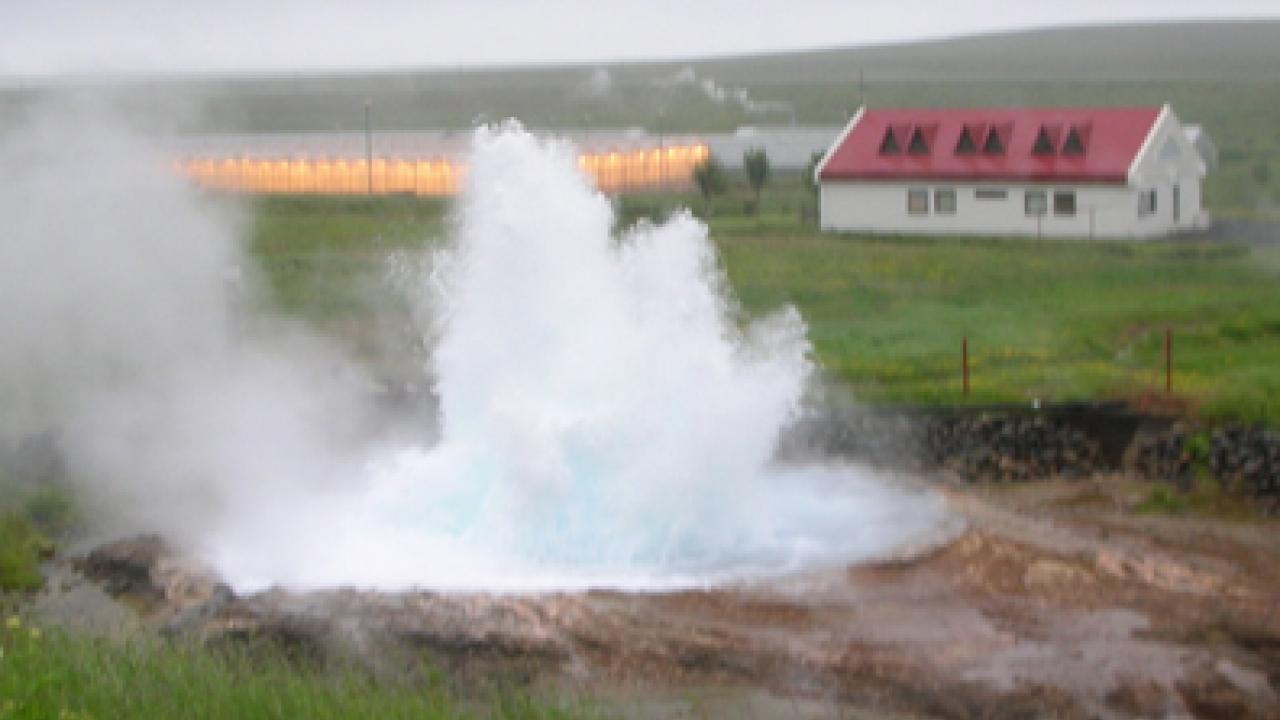A borehole deep into Iceland’s rocky crust to explore new methods of using geothermal energy hit a major roadblock on June 25: The drill ran into molten rock at a depth of 6,900 feet.
“This is only the third time that magma has ever flowed into a geothermal drill hole, as far as we know,” said Peter Schiffman, a geology professor at UC Davis and member of the international team conducting the study. “A research project in Hawaii hit magma in 2005, and in 1977 magma erupted out the top of a producing geothermal well not far from our site in Krafla, Iceland.”
The presence of the magma means that the project, known as the Iceland Deep Drilling Project, or IDDP, will not be able to continue drilling at this site, but two more deep drill holes are planned for the future. The bore hole was originally slated to be drilled 11,500 feet, or almost 2.2 miles into the earth.
The main purpose of IDDP — an international research effort supported by the Icelandic power companies, the Icelandic government, Alcoa Inc., the International Continental Drilling Program and the National Science Foundation — is to investigate the economic feasibility of extracting energy from hydrothermal systems that are under extremely high temperatures and pressures.
Drilling began at the site near Krafla in northeast Iceland in December 2008. After reaching a depth of 2,600 feet, the project was put on hold during the harsh winter before resuming in early March.
Drilling at the site became difficult around the middle of April, Schiffman said. “We kept drilling, but had lots of technical problems,” he said. “We just seemed to be stuck at the same depth. But it wasn’t until (June 25) that we realized we had run into magma.”
Two of Schiffman’s UC Davis colleagues were onsite in Iceland at the time: geology professor Robert Zierenberg and graduate student Naomi Marks. They reported that geologists working for Landsvirkjun, the Icelandic company that operates the geothermal plant, deduced that a phenomenon known as “steam flashing” seems to have occurred on June 25, when drilling fluid came in contact with magma, creating an explosion. Glass shards removed from the hole provided evidence for this, they said. These most likely formed when the fluid, which is principally water, quenched molten rock.
Based on geophysical mapping of the area, Schiffman said, the team suspected that it had encountered a small offshoot of a larger magma body that lies more than 2 miles below the surface.
Although the hole cannot be drilled any deeper, it might still prove useful for testing a new system of geothermal energy extraction that involves sending cold water into one borehole to be retrieved as superheated steam from holes nearby, a technique known as “enhanced energy production,” Zierenberg said.
In conjuction with IDDP team members in Iceland, Landsvirkjun is now preparing the well for a flow test to evaluate the possibility of using it for energy production.
On the Net
Media Resources
Dave Jones, Dateline, 530-752-6556, dljones@ucdavis.edu
